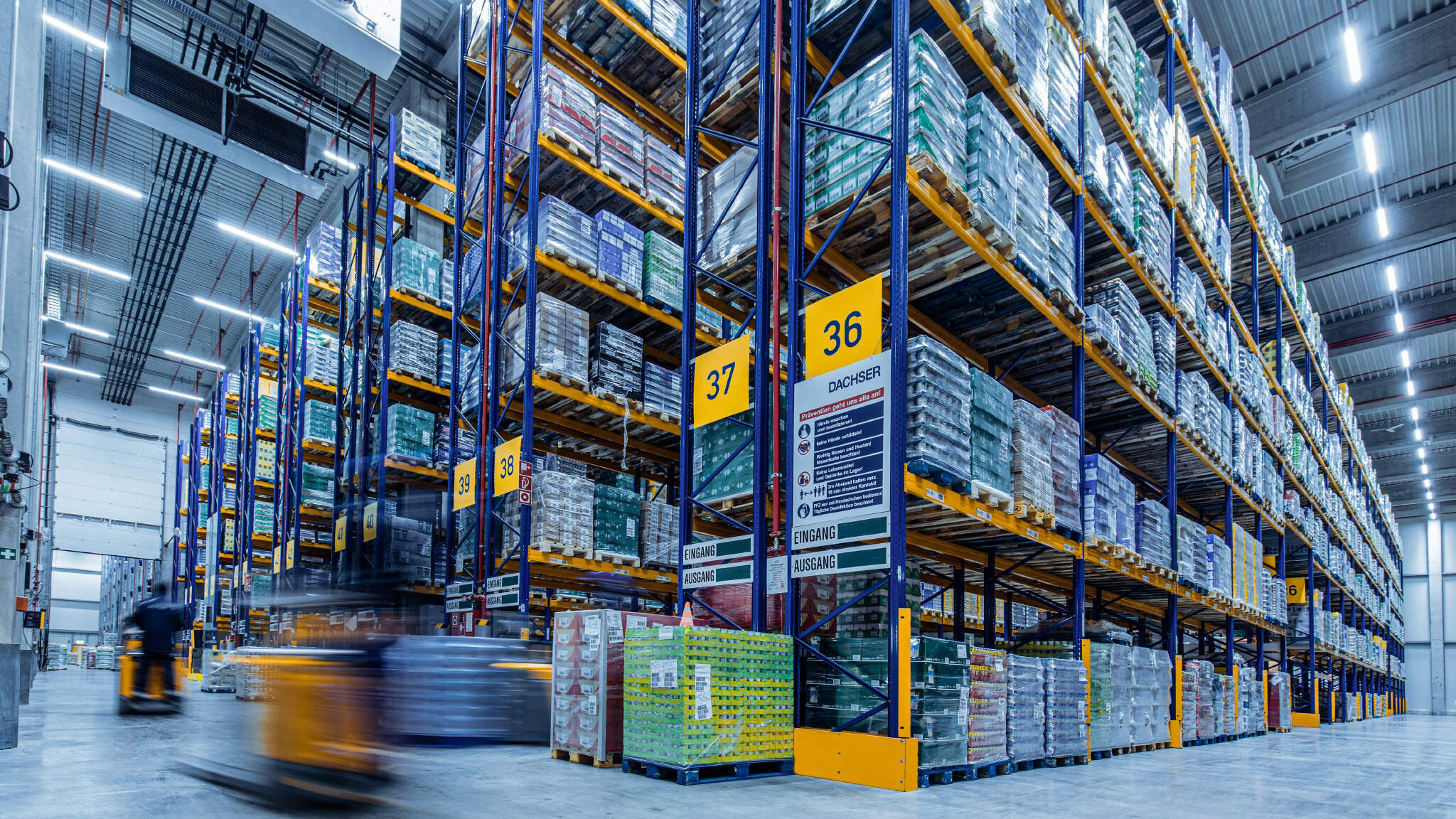Ready to turn insight into action?
We help organisations transform ideas into measurable results with strategies that work in the real world. Let’s talk about how we can solve your most complex supply chain challenges.

When designing large-scale sporting venues, much of the focus typically centres around the fan experience, the aesthetics of the stadium, seating capacity, and advanced technology to enhance spectator engagement. While these elements are essential, the success of any large sporting venue also hinges on an often-overlooked aspect—back-of-house (BOH) logistics.
BOH logistics encompasses the movement of goods, services, and people that occur behind the scenes but are crucial to the seamless operation of the venue. From food and beverage (F&B) deliveries to waste management, staff movement, and event preparation, BOH logistics ensures that a sporting venue functions efficiently, supporting the front-end operations that fans experience.
In this article, we will explore the key considerations for BOH logistics in large-scale sporting venue developments, outlining why it is essential for long-term operational efficiency. We'll also touch on how Trace Consultants’ BOH Logistics Excellence Framework, commonly applied to hospitals and healthcare facilities, can be adapted to the sports and entertainment industry to ensure smooth operations during high-profile events.
Why BOH Logistics is Critical in Sporting Venues
Behind every exciting match or world-class event at a sporting venue, a complex network of logistical operations ensures that everything runs smoothly. Whether it’s ensuring that concession stands are well-stocked, that security staff are where they need to be, or that waste is managed efficiently, BOH logistics is the lifeblood of the venue’s operations.
For large-scale sporting events, particularly those that draw tens of thousands of fans, the pressure on BOH logistics increases exponentially. The stakes are high—any disruption in the flow of goods or services can lead to long queues, dissatisfied fans, safety risks, and even financial losses. As a result, it is crucial for designers, developers, and operational managers to integrate BOH logistics into the master plan of any large sporting venue from the outset.
Key Considerations for BOH Logistics in Sporting Venue Design
- Loading Docks and Deliveries
One of the most important aspects of BOH logistics is the efficient movement of goods into and out of the venue. In a large stadium or arena, this includes everything from food and drink supplies to merchandise, maintenance equipment, and security infrastructure. - The loading dock should be strategically placed to allow easy access for delivery trucks while minimising disruptions to fans and public areas. Inadequate loading dock capacity or poor access can lead to delivery delays, which may result in under-stocked concession stands or late-stage preparations, negatively affecting the event experience.
- Designers must also consider how goods move from the loading dock to various points within the venue, ensuring that there are clear, efficient flow paths to concession stands, kitchens, and storage areas.
- Food & Beverage (F&B) Logistics
One of the key revenue streams for sporting venues is F&B sales. Ensuring that fans receive high-quality, fresh food and beverages in a timely manner requires an efficient supply chain and logistics operation. - Sporting venues must be designed with adequate storage facilities for F&B supplies, and kitchens must be strategically located to allow for quick replenishment of concession stands. Additionally, the movement of goods between kitchens, storage areas, and service points should be planned to minimise disruption during the event. Inadequate planning can lead to long queues, dissatisfied fans, and potential revenue loss.
- Waste Management
Waste management is a significant operational challenge for large sporting venues, particularly during high-attendance events. Effective waste management systems should be designed into the venue’s BOH logistics from the start, ensuring that waste is collected, transported, and disposed of efficiently. - To minimise the impact on both the front-of-house experience and the operational team, waste disposal areas should be located away from high-traffic fan zones and have easy access for removal trucks. Planners should also consider implementing sustainable waste management practices, such as recycling and composting, to align with modern environmental standards.
- Staff Movement and Access
Efficient movement of staff throughout the venue is critical for ensuring that operations run smoothly during an event. This includes everyone from catering staff to security personnel, maintenance workers, and event management teams. - Sporting venues should be designed with dedicated BOH corridors and pathways that allow staff to move quickly and efficiently between key areas of the venue without interfering with the fan experience. For example, security staff need to be able to access high-risk areas easily, while catering teams should have unobstructed access to kitchens and service points. This allows staff to remain behind the scenes while keeping front-of-house operations seamless.
- Storage and Inventory Management
Large-scale sporting venues require extensive storage for a range of goods, including F&B supplies, merchandise, maintenance tools, medical supplies, and even sports equipment. Efficient storage and inventory management are critical for ensuring that these supplies are readily available when needed. - A well-designed BOH logistics system should include ample storage space, strategically located throughout the venue to support different operational needs. For example, F&B supplies should be stored close to kitchens and service points, while maintenance equipment should be housed near critical infrastructure areas. Implementing real-time inventory management technology can help venue operators track stock levels and automatically reorder supplies as needed.
- Security Logistics
The safety and security of fans, athletes, and staff is a top priority for any sporting venue. Effective security logistics are essential for ensuring that staff can respond to incidents quickly and effectively while maintaining the safety of the venue. - BOH logistics should include designated areas for security staff, control rooms for monitoring, and efficient routes for moving personnel to critical areas. Additionally, security checkpoints and screening equipment should be integrated into the venue design to ensure that all deliveries and movements of goods into the venue are secure.
The Role of Technology in Sporting Venue Logistics
Just as technology has revolutionised logistics in other sectors, it plays a key role in the management of BOH operations in sporting venues. By leveraging advanced logistics solutions, venues can automate many of the processes associated with goods delivery, inventory management, and staff scheduling.
- Real-Time Inventory Management
Sporting venues can implement technology solutions that enable real-time tracking of inventory levels, helping them to keep F&B supplies, merchandise, and maintenance tools stocked without excess. RFID tagging, barcoding, and cloud-based systems provide venue operators with real-time visibility into stock levels, allowing them to make informed decisions and avoid shortages during events. - Predictive Analytics
By analysing historical data, venues can use predictive analytics to forecast demand for various goods and services during events. For example, a venue may be able to predict a surge in demand for certain food and beverage items based on the time of day or the type of event. This helps operators better prepare and ensure that the necessary supplies are on hand. - Staff Scheduling and Management
Managing large numbers of staff during events can be challenging. Technology solutions such as workforce management software enable venue operators to schedule staff efficiently, ensuring that the right number of workers is available in each area of the venue at any given time. - Route Optimisation
Similar to logistics solutions used in other sectors, sporting venues can leverage route optimisation technology to ensure that goods are delivered to their intended destinations within the venue efficiently. This reduces travel time, minimises disruptions, and ensures that F&B supplies and other critical goods reach their destinations on time.
Trace Consultants’ BOH Logistics Excellence Framework for Sporting Venues
While originally developed for healthcare facilities, Trace Consultants’ BOH Logistics Excellence Framework is highly applicable to the design and operation of large sporting venues. The framework provides a comprehensive approach to managing the flow of goods, services, and people, ensuring that BOH operations run smoothly and efficiently.
- Physical Design: The framework places emphasis on the physical layout of the venue, ensuring that loading docks, storage areas, kitchens, and waste disposal zones are strategically located for efficient operation. By integrating BOH logistics into the overall venue design, Trace Consultants help venues optimise flow paths and reduce operational bottlenecks.
- Planning and Execution: Trace Consultants provide expertise in planning demand and replenishment, ensuring that F&B supplies, merchandise, and other critical goods are available when needed. They also assist with workforce scheduling and security logistics to ensure that events run smoothly.
- Technology Integration: Just as in healthcare facilities, technology is a key enabler in sporting venue logistics. Trace Consultants work with venue operators to implement advanced logistics solutions that automate inventory management, track real-time data, and optimise staff scheduling.
The design and development of large-scale sporting venues go far beyond the fan experience and aesthetics. Effective BOH logistics is essential for ensuring that these venues operate seamlessly, supporting everything from F&B sales to security, staff movement, and waste management.
By integrating BOH logistics into the overall design process, sporting venues can enhance operational efficiency, reduce costs, and ensure a smooth experience for both fans and staff. Trace Consultants, through their BOH Logistics Excellence Framework, are helping developers, architects, and venue operators optimise the logistics that power the world’s most iconic sports venues.
Ready to turn insight into action?
We help organisations transform ideas into measurable results with strategies that work in the real world. Let’s talk about how we can solve your most complex supply chain challenges.








